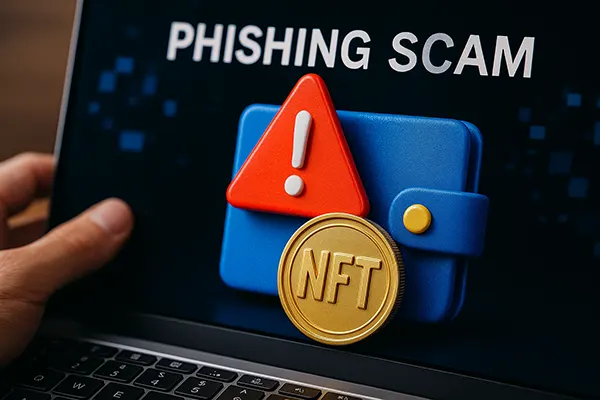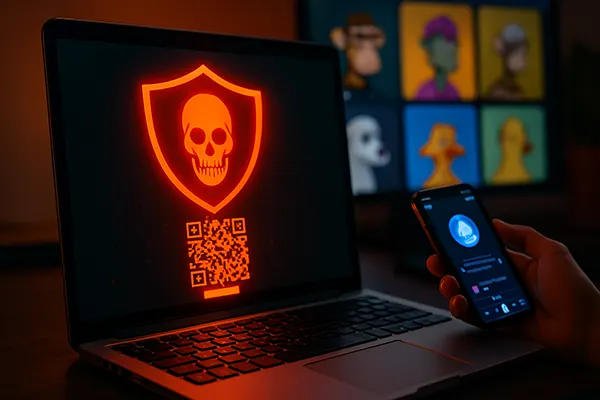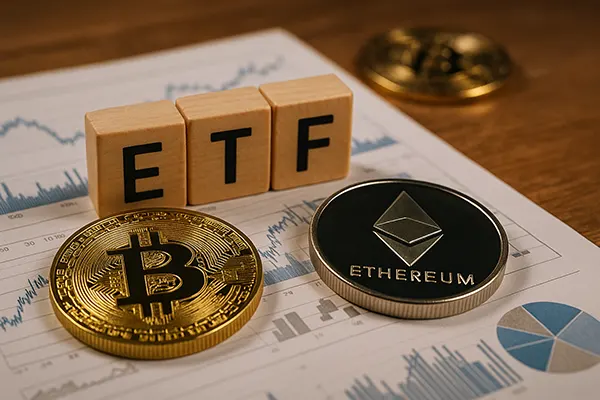
Fraudulent NFT Wallets and Fake Mints: A New Wave of Attacks on OpenSea and Blur
The NFT industry has seen enormous growth, but with expansion comes risk. In 2025, malicious actors have adopted more advanced schemes, targeting collectors and creators on OpenSea, Blur, and other major NFT trading sites. Among these are fake minting events and deceptive wallets designed to mimic trusted services, creating a new security challenge for users.
The Rise of Fake Minting Campaigns
One of the most common threats in early 2025 is the proliferation of fraudulent minting events. These campaigns often mimic real NFT launches, complete with fake countdowns, forged creator profiles, and professionally designed websites. Users are lured into connecting their wallets and signing malicious smart contracts, which result in unauthorised access to their assets.
The attackers typically use social media platforms like X (formerly Twitter), Discord, and Telegram to distribute links. Impersonated influencers and fake community accounts add legitimacy to these scams, convincing even seasoned users. Once connected, a wallet can be drained in seconds.
What’s particularly dangerous is the sophistication of these operations. Some malicious mint pages even simulate blockchain confirmation screens, misleading users into believing transactions are verified by the network.
How Fake Mints Target Users
Cybercriminals exploit FOMO (fear of missing out) by announcing ‘limited edition’ NFT drops that require immediate action. Victims rush to participate, often overlooking red flags such as misspelled URLs or unusual gas fees.
To build trust, attackers may replicate real contract addresses or use older verified token IDs. This makes it difficult for users to detect the fraud before it’s too late. Even experienced collectors have reported falling prey to these tactics in 2025.
Once compromised, recovery options are limited. In most cases, stolen NFTs are quickly transferred to laundering wallets and sold on decentralised marketplaces, leaving little trace of the original theft.
Deceptive Wallet Applications
Another critical vector of attack this year involves counterfeit wallet applications. These mobile or browser-based tools masquerade as trusted services like MetaMask or Phantom but are engineered to capture private keys or seed phrases upon setup.
Users downloading these apps from unofficial app stores or clicking pop-up ads are especially vulnerable. These fake wallets often appear high in search results through aggressive SEO or paid promotion, targeting unsuspecting users seeking to create or recover a wallet.
Unlike traditional phishing, where users are tricked into entering credentials, these applications take full control of the device’s key management. As a result, users unknowingly give attackers unrestricted access to their digital assets.
Distribution Channels and Risks
The main distribution methods include malicious browser extensions, cloned APK files, and fake websites offering ‘wallet recovery tools.’ Some of these sites use TLS certificates and polished UIs, making them indistinguishable from legitimate services at first glance.
Security researchers have identified Telegram groups that actively share lists of compromised wallets and provide updates on the latest phishing tools. This organised criminal ecosystem operates much like a black market for NFTs.
Victims often discover the fraud only after noticing unusual activity on their accounts. By then, their digital collectibles may have already been resold or transferred beyond reach.

Impact on OpenSea, Blur and the NFT Market
The implications of these attacks have extended beyond individual losses. OpenSea and Blur have seen spikes in phishing-related reports, forcing them to invest heavily in fraud detection systems and wallet blacklists. However, the decentralised nature of blockchain limits their ability to reverse or halt fraudulent transactions.
In response, platforms have begun implementing wallet verification badges and multi-factor transaction confirmations. While helpful, these measures are not foolproof. The responsibility largely remains on users to exercise caution and follow best practices when interacting with minting sites or connecting wallets.
Moreover, trust in the NFT ecosystem has been shaken. New users are hesitant to participate in public drops or engage with lesser-known creators, reducing overall transaction volume and slowing community growth.
Future Threats and Defensive Measures
Experts predict that in the latter half of 2025, attackers will begin leveraging AI-generated art and deepfake influencers to promote scam mints. This raises the bar for due diligence among buyers and creators alike.
Users are encouraged to verify links through official project channels and to use hardware wallets whenever possible. Tools like Etherscan and NFT analytics dashboards can assist in evaluating the legitimacy of a mint or contract.
Collaboration across the NFT community, including collectors, developers, and marketplaces, is crucial to combating these threats. Shared databases of scam sites, wallet blacklists, and educational initiatives are already showing promise in reducing the success rate of such attacks.



